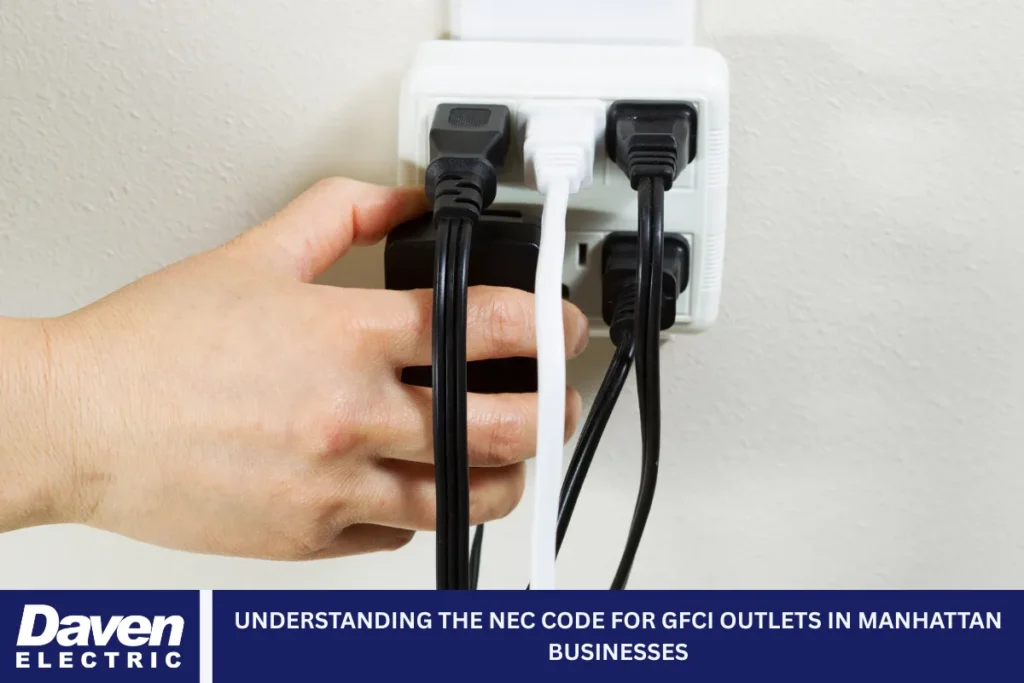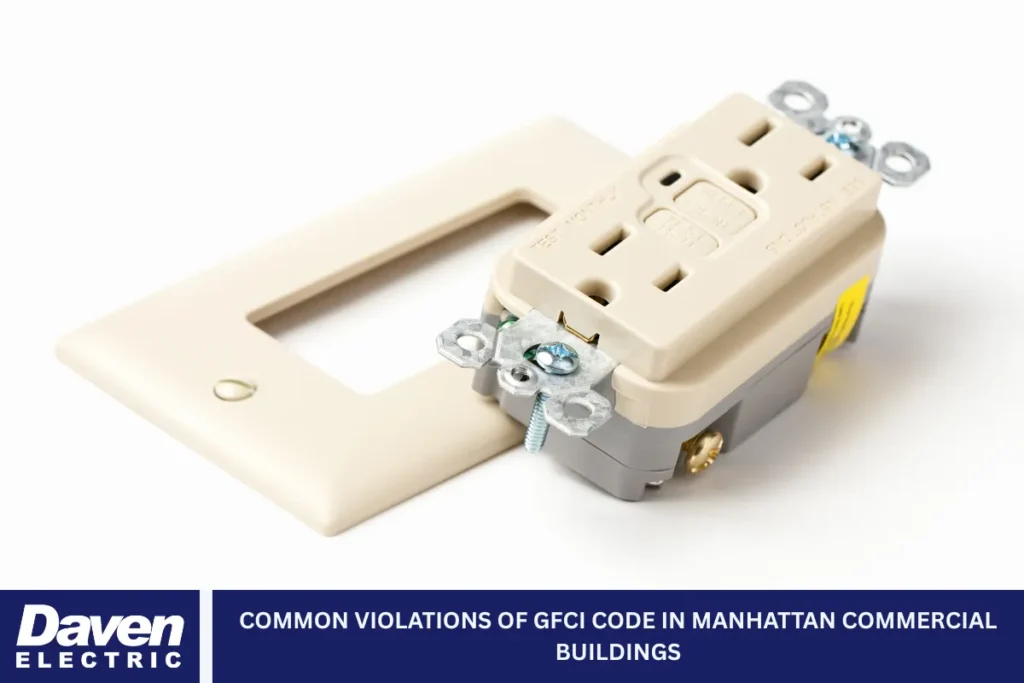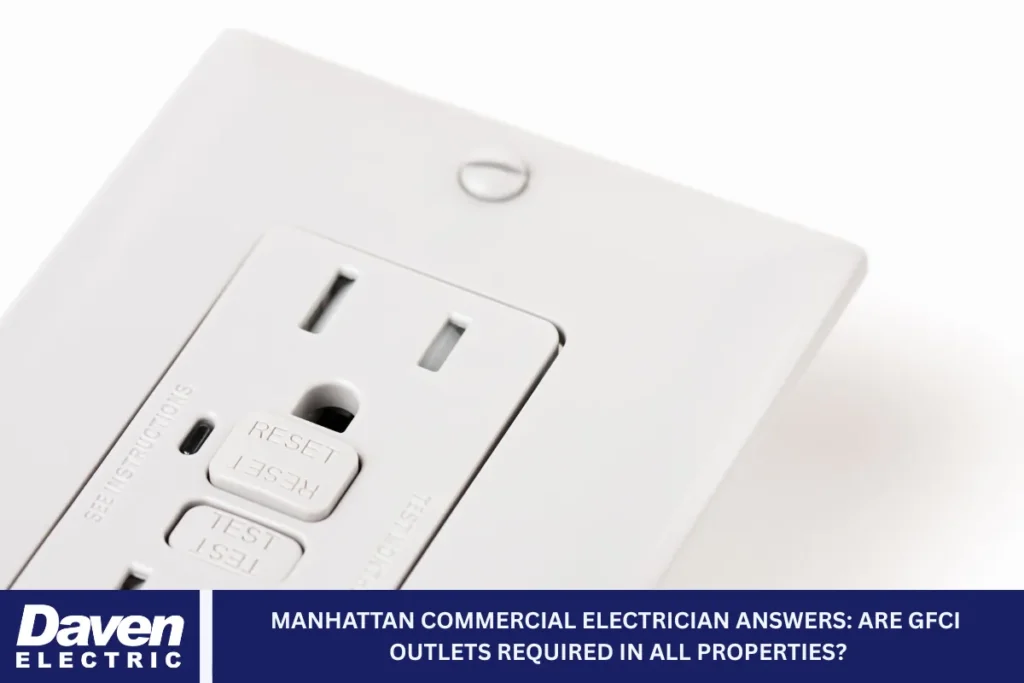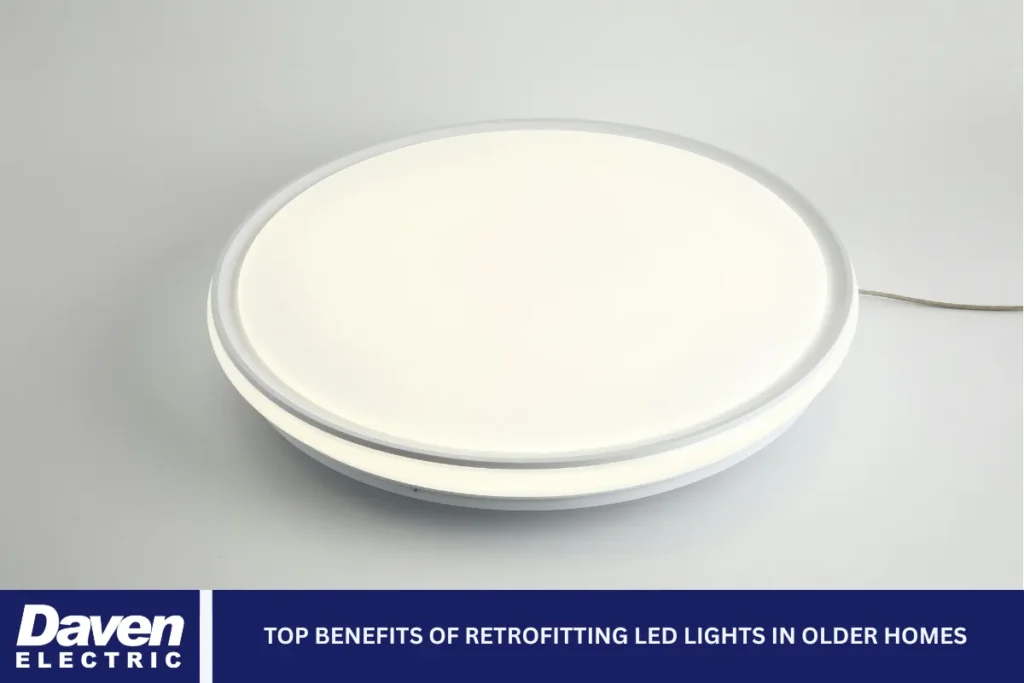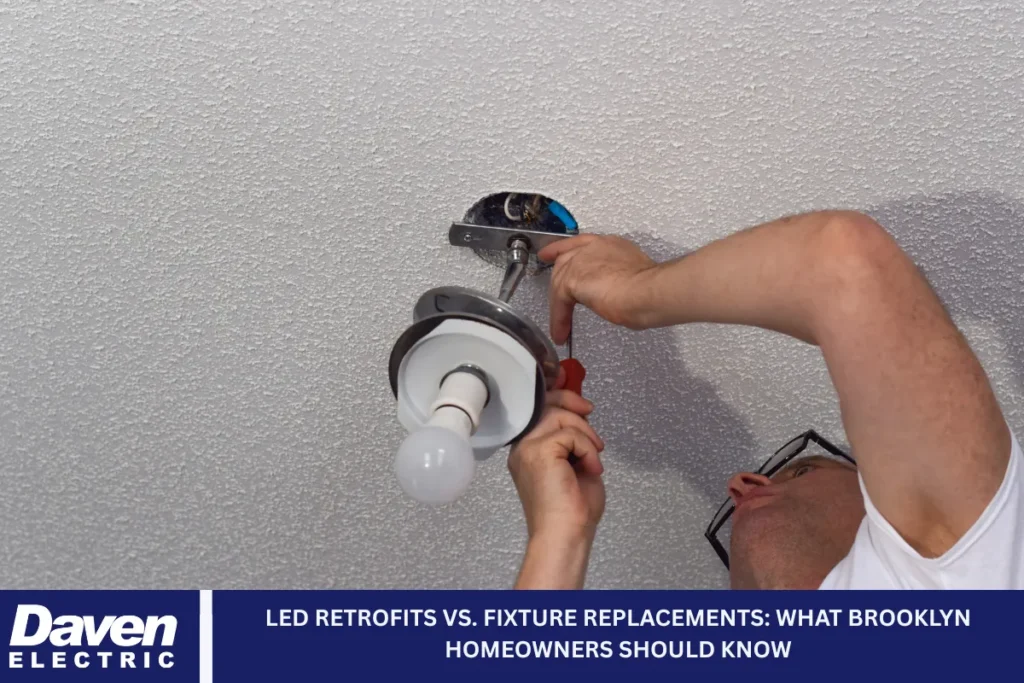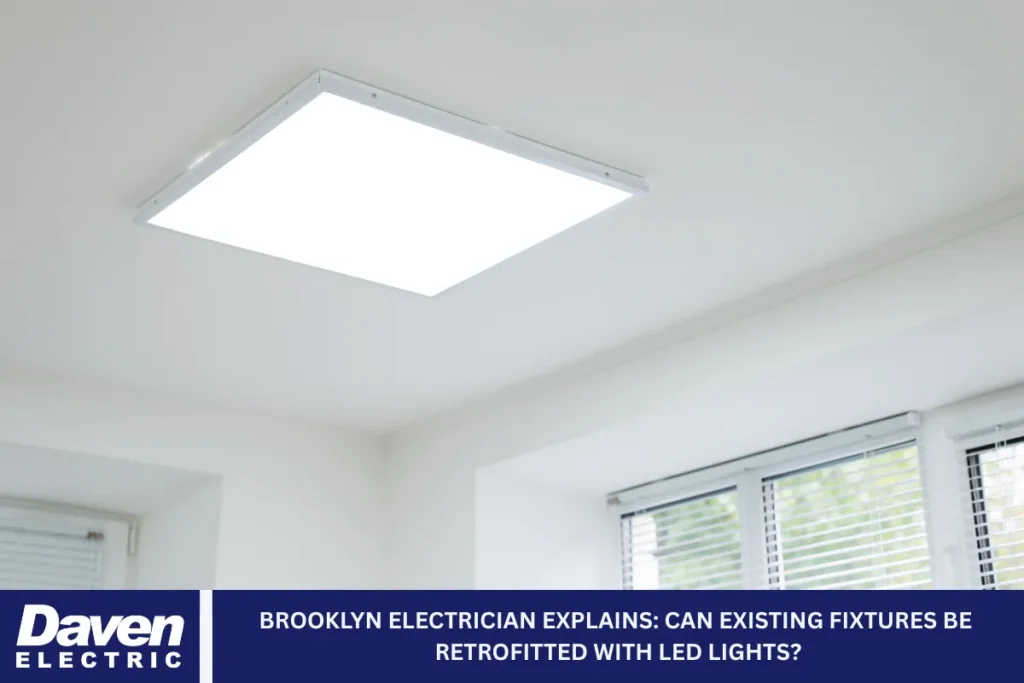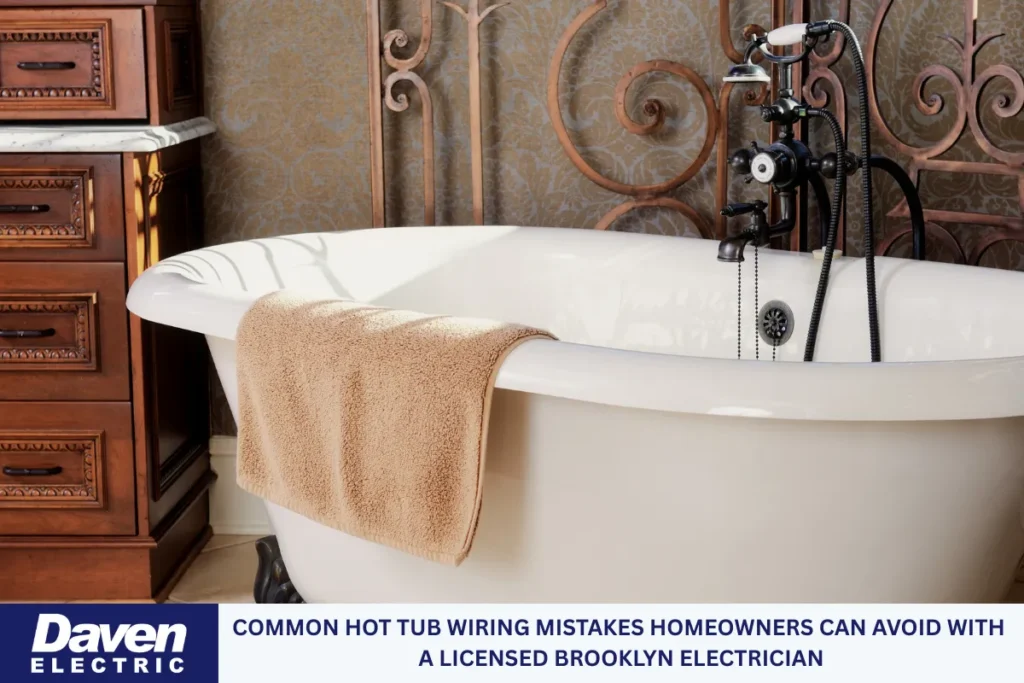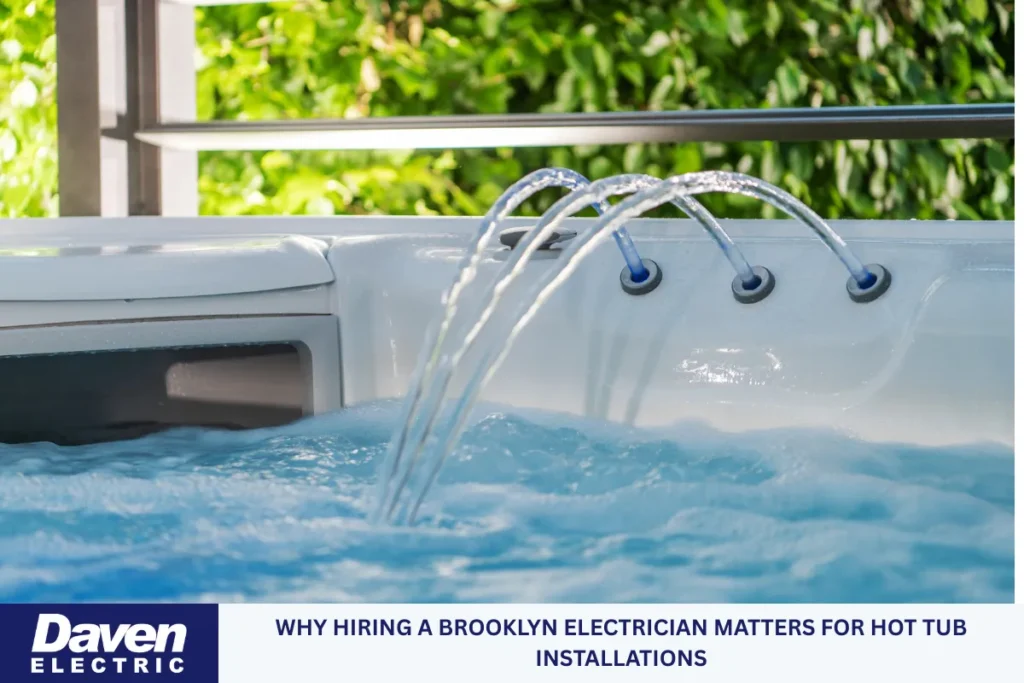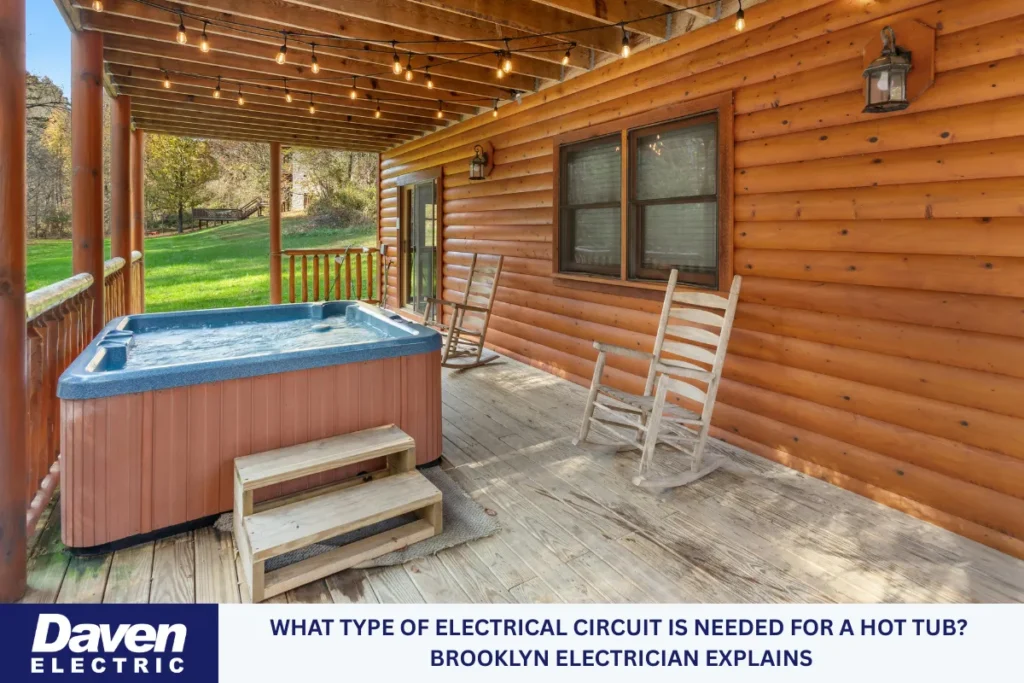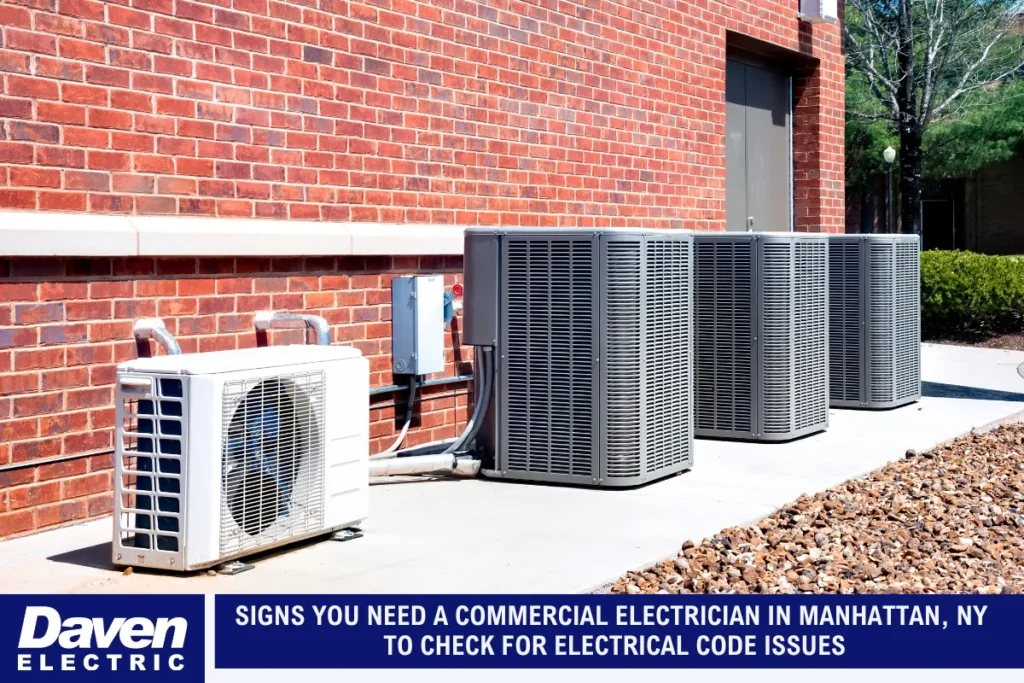Complying with electrical safety standards is crucial for all business properties, and hiring a commercial electrician in Manhattan ensures your building meets the required codes and regulations. One of the most important aspects of electrical compliance is understanding how Ground Fault Circuit Interrupter (GFCI) outlets fit into the National Electrical Code (NEC) and how these standards specifically apply to commercial properties, such as those in Manhattan.
This guide provides a comprehensive overview of everything you need to know about GFCI outlets, NEC requirements, and local compliance for businesses operating in Manhattan. With a clear structure and in-depth insights, this article will help property owners, facility managers, and contractors understand what’s required and why it matters.
What Are GFCI Outlets?
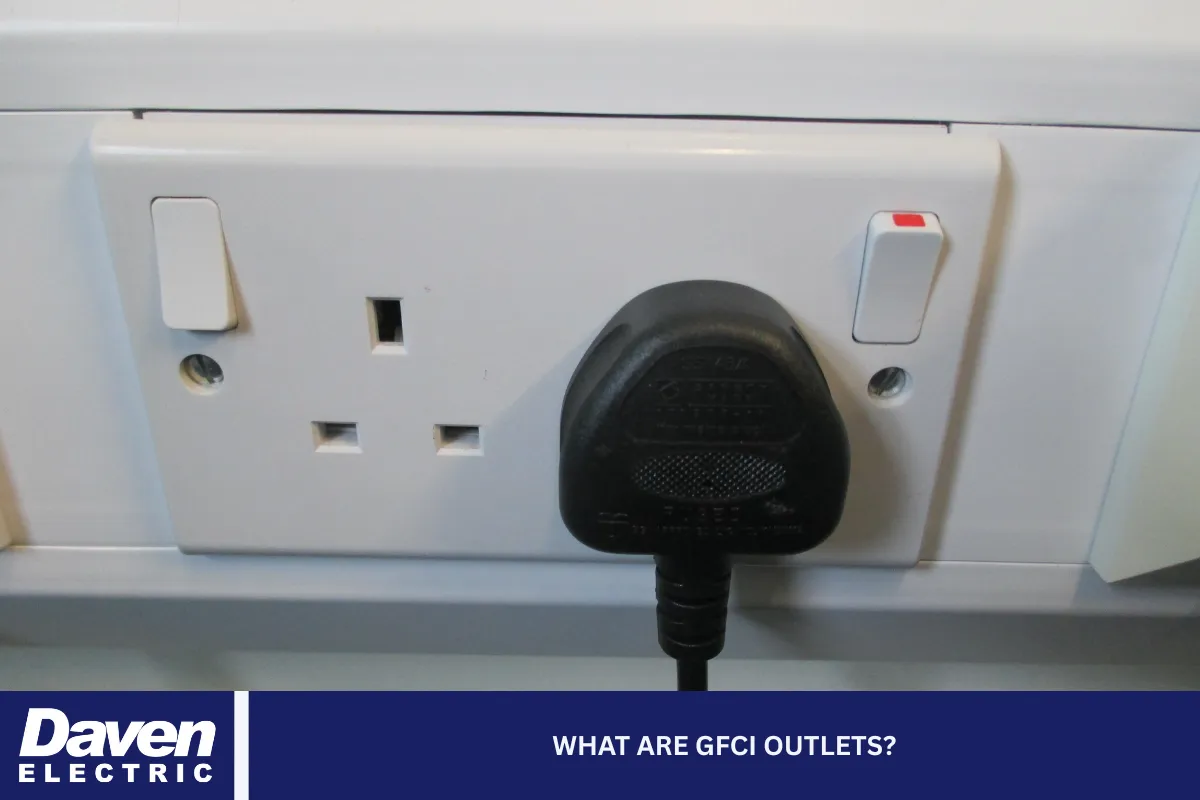
GFCI outlets, or Ground Fault Circuit Interrupters, are electrical receptacles designed to protect people from serious electric shocks caused by ground faults. A ground fault happens when electricity takes an unintended path to the ground, often through a human body. These devices monitor the amount of current flowing through a circuit and immediately shut off power if an imbalance is detected. This reaction occurs in a fraction of a second—fast enough to prevent injury or even death.
The primary role of a GFCI outlet is to minimize the risk of electric shock, fire, and equipment damage. It does this by constantly comparing the current going into and out of the circuit. If even a small difference is detected, the GFCI automatically breaks the circuit.
These outlets are required in areas where water or moisture may come into contact with electrical equipment, making them essential in both residential and commercial environments. Their use is mandated by the NEC and enforced by city-specific regulations like those adopted by New York City.
Understanding the NEC and Local Electrical Code in Manhattan
The National Electrical Code (NEC) is a set of standards developed by the National Fire Protection Association (NFPA) to ensure safe electrical design, installation, and inspection. Although it is a nationally recognized standard, the NEC is adopted and enforced locally, meaning individual jurisdictions, such as New York City, may modify or add to it based on local needs and requirements.
In Manhattan, the local authority uses the New York City Electrical Code, which is heavily based on the NEC but includes its own set of amendments. These amendments account for the unique building structures, climate conditions, and safety concerns that exist within the city. As a result, understanding both the NEC and NYC’s electrical code is critical for any work involving commercial properties.
All new electrical installations and renovations in commercial spaces must comply with this code, and inspections are conducted to verify compliance. Failure to meet these standards can result in citations, fines, or delays in occupancy or operation.
Why GFCI Outlets Are Required in Commercial Settings
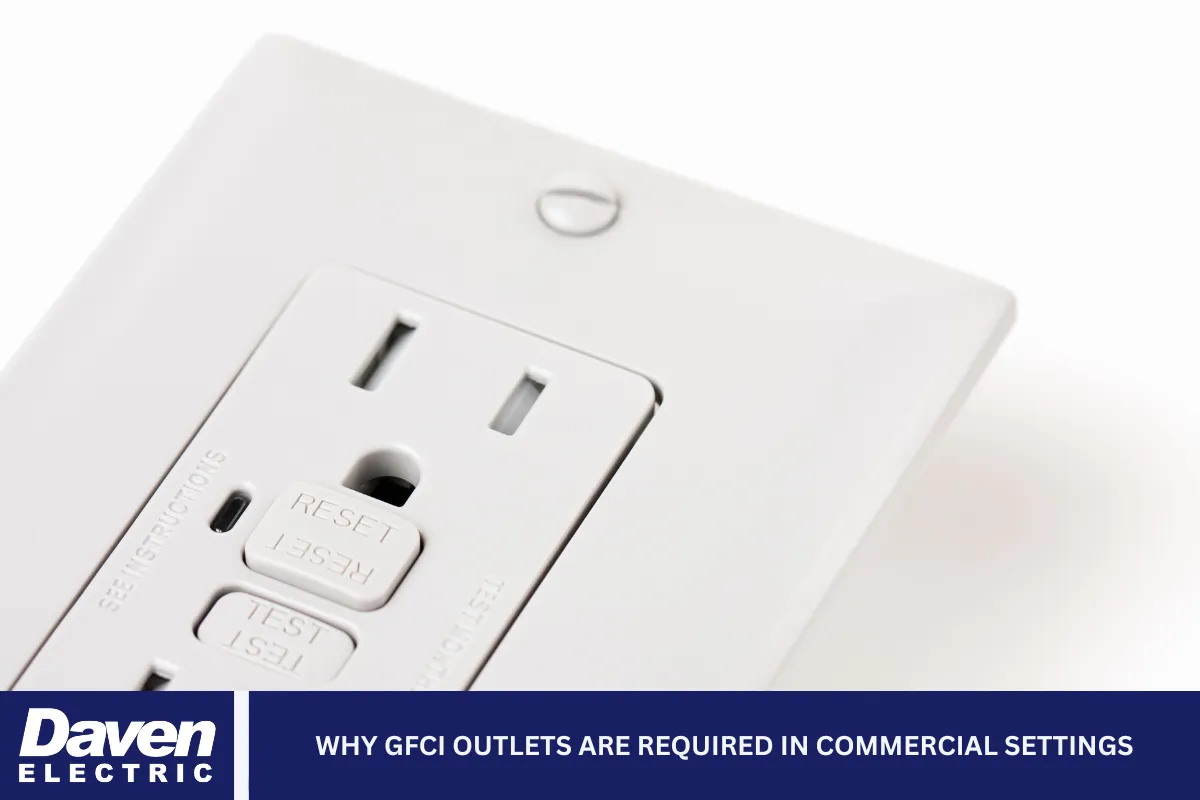
The requirement for GFCI outlets in commercial buildings is not simply a matter of code compliance—it is a safety necessity. Commercial spaces typically have higher foot traffic, a greater number of electronic devices, and more complex infrastructure than residential buildings. These factors increase the potential for electrical hazards.
GFCI outlets are especially important in commercial spaces because:
- They reduce the risk of electric shock in areas prone to moisture.
- They help protect employees, customers, and service personnel.
- They minimize the chance of costly electrical fires.
- They ensure the facility meets mandatory inspection requirements.
In business environments where safety regulations are tightly enforced, failing to install GFCIs in required areas could result in legal and financial penalties. For that reason, it’s not just recommended—but mandatory—to work with a commercial electrician in Manhattan who understands where and how these devices must be installed.
NEC-Mandated Areas for GFCI Installation in Commercial Properties
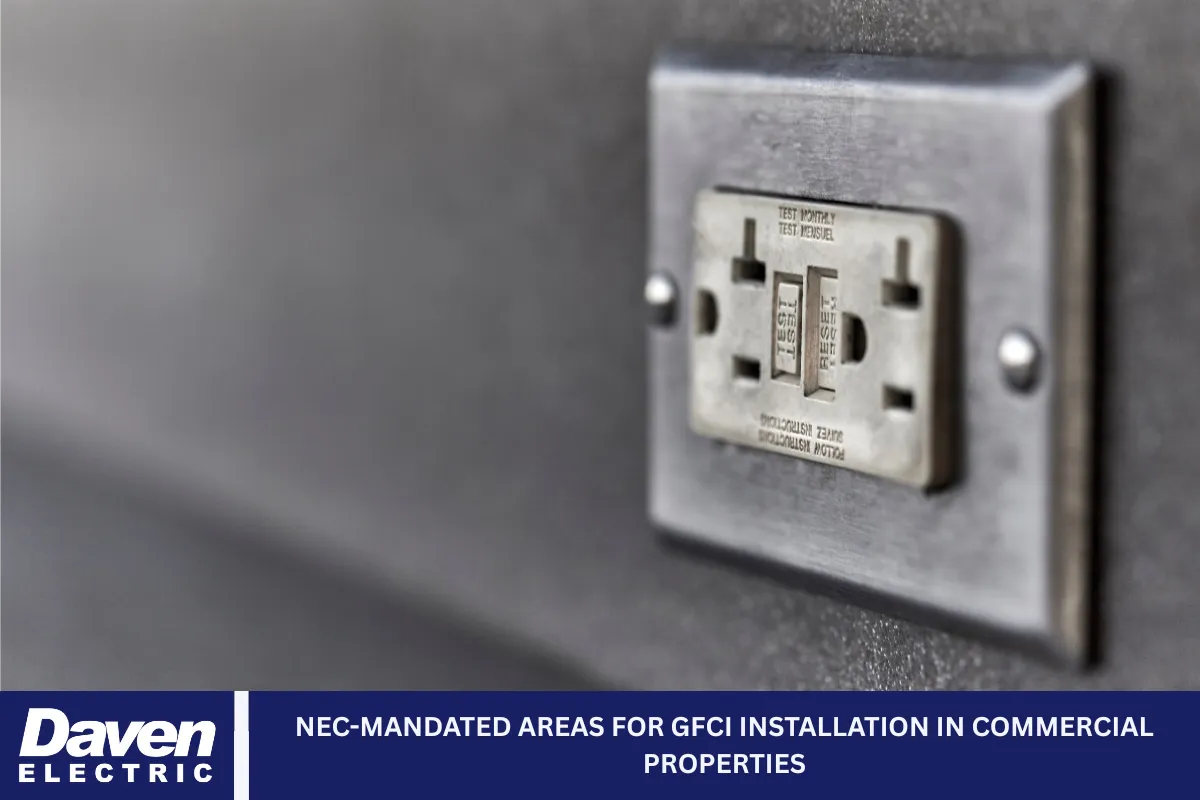
The NEC outlines specific areas where GFCI outlets must be installed. These locations are determined by their potential exposure to water, dampness, or high human interaction. Here’s a breakdown of key commercial zones in Manhattan where GFCIs are typically required:
Bathrooms
Every receptacle in commercial restrooms must have GFCI protection, regardless of the building type. Moisture is a constant presence, and the risk of electrical contact is high. GFCIs eliminate that danger by automatically cutting off power when a fault is detected.
Kitchens and Pantry Areas
Any outlet installed within six feet of a sink in commercial kitchens, break rooms, or food preparation spaces must be GFCI-protected. This includes outlets for coffee machines, microwaves, and vending equipment. Kitchens are high-risk environments due to the presence of water, metal appliances, and the continuous use of electrical devices.
Rooftops and Mechanical Equipment Areas
Service receptacles located on rooftops, where HVAC units or communication equipment may be installed, are required to have GFCI protection. These areas are frequently accessed by maintenance workers, making safety a top priority.
Exterior and Outdoor Receptacles
Outdoor outlets are exposed to rain, snow, and condensation. All exterior receptacles in commercial buildings—including those used for signage, lighting, or holiday decorations—must include GFCI protection to safeguard against exposure to outdoor moisture.
Basements and Crawl Spaces
In commercial buildings with basements used for storage or mechanical systems, GFCI outlets must be installed, especially where moisture intrusion is possible. Crawl spaces, due to their confined and damp nature, are also on the required list.
Laundry Areas and Utility Rooms
Rooms where washing machines, water heaters, or sinks are present are classified as wet areas. GFCI protection in these locations helps prevent electrical incidents caused by splashing water or leakage.
Janitorial Closets
Closets equipped with slop sinks or other water sources need GFCI outlets. These rooms are often overlooked during inspections, but they are not exempt from code requirements.
Common Compliance Issues Found in Manhattan Commercial Buildings
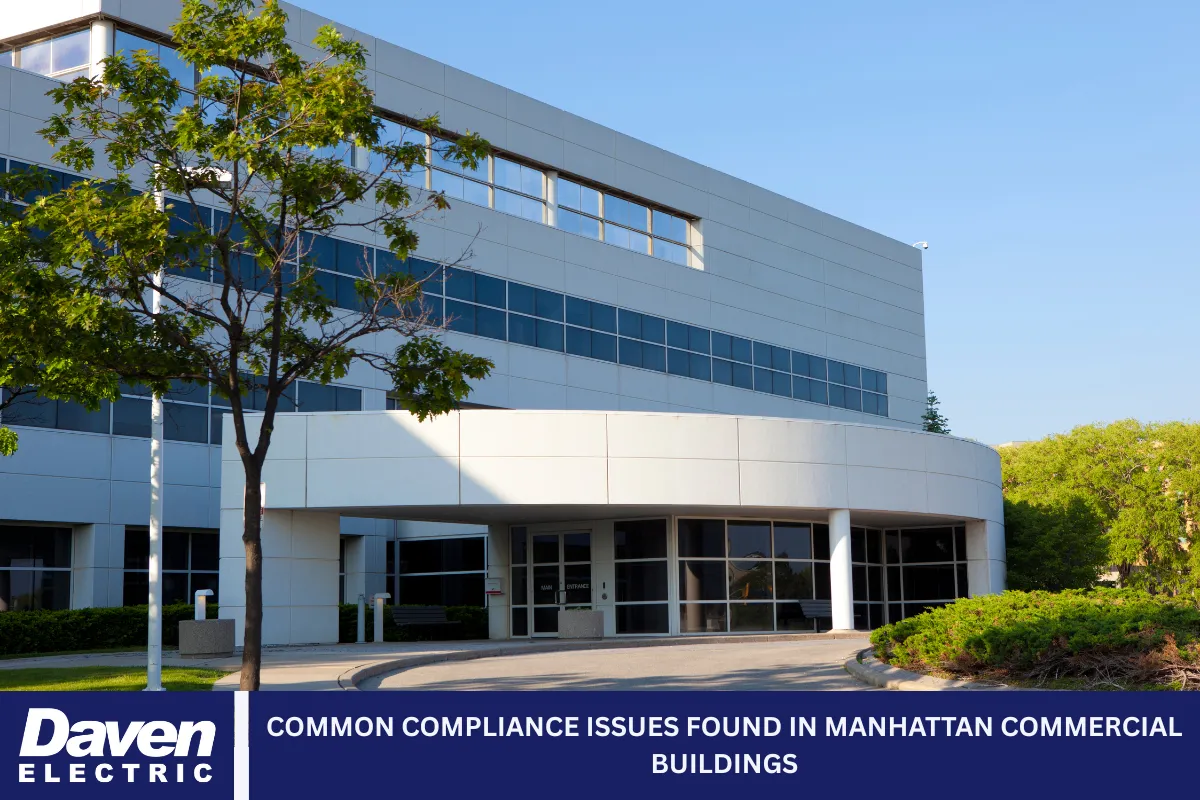
In a fast-paced environment like Manhattan, where buildings range from historic brownstones to modern skyscrapers, code compliance can be a complex issue. Many properties still operate with outdated electrical systems that don’t meet current NEC standards.
Common issues include:
Lack of GFCIs in Updated Areas
Some business owners renovate parts of their property without upgrading electrical components. If a kitchen or bathroom is remodeled but old outlets are left in place, the property may fail inspection.
Improper Installation
Installing a GFCI outlet requires correct wiring and load-line configuration. An incorrectly installed outlet may not provide proper protection and could trip unnecessarily or fail to trip at all.
Overloaded Circuits
Many commercial circuits handle multiple outlets and devices. If too many high-wattage machines are used, it can overwhelm the GFCI, leading to nuisance tripping and operational downtime.
Hidden or Inaccessible GFCIs
GFCI outlets must remain accessible. If placed behind equipment or panels, they are considered non-compliant and unsafe for use.
Testing and Maintenance Requirements for GFCI Outlets
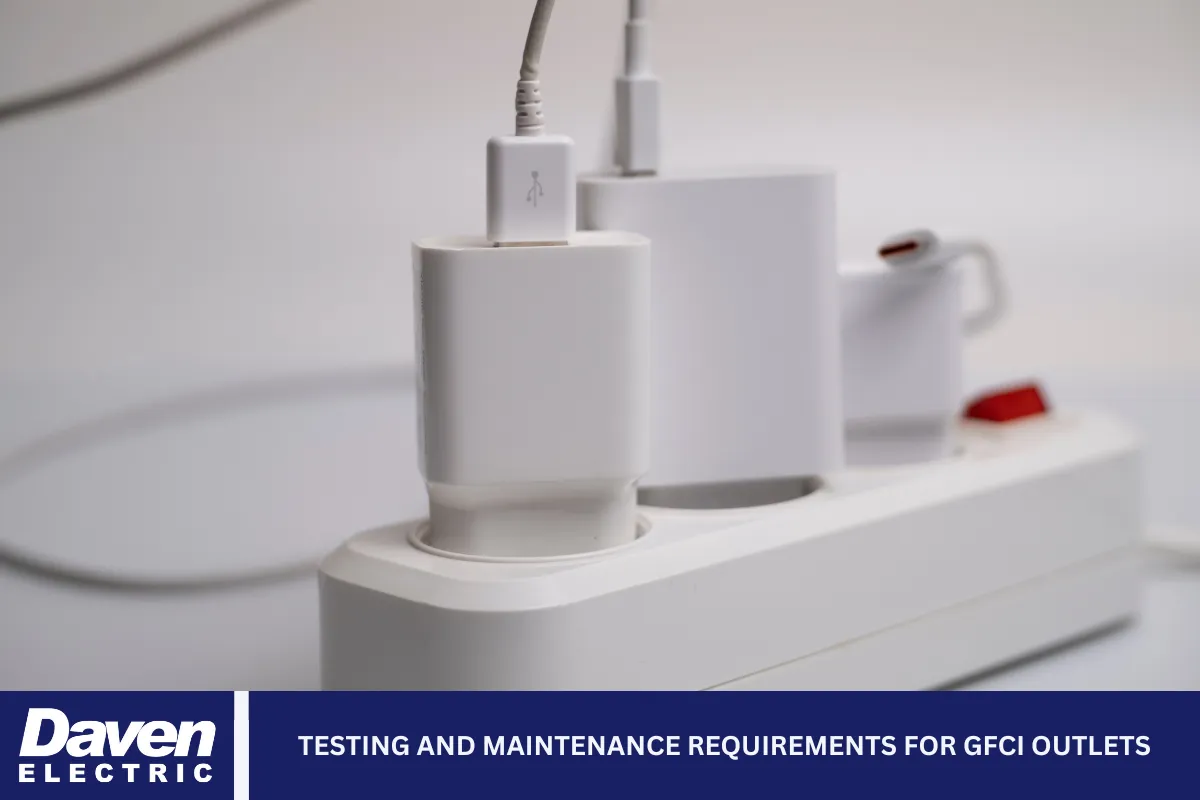
Once GFCIs are installed, they must be maintained and tested regularly to ensure they remain effective. While the NEC mandates monthly testing for safety, many commercial properties schedule quarterly or biannual inspections as part of a broader facility management plan.
How to Test a GFCI Outlet:
- Press the “Test” button on the face of the outlet. This should cut the power immediately.
- Verify that any connected devices lose power.
- Press the “Reset” button to restore function.
Testing is simple, but it’s often overlooked. Without routine checks, a malfunctioning GFCI could silently fail, rendering it ineffective and failing to protect at all. Commercial electricians trained in NEC standards will often include this testing as part of their regular service plans.
Upgrading Electrical Systems to Meet GFCI Standards
Businesses operating in older Manhattan buildings often need electrical upgrades to remain compliant. Whether it’s a retail space being remodeled or an office suite being reconfigured, updating to current NEC standards usually involves:
- Assessing existing circuits and wiring.
- Replacing outdated outlets with GFCI receptacles.
- Ensuring proper grounding and line/load connections.
- Updating electrical panels to accommodate modern code requirements.
These upgrades not only ensure safety but also support better energy management and operational efficiency.
The Role of a Commercial Electrician in Ensuring GFCI Compliance
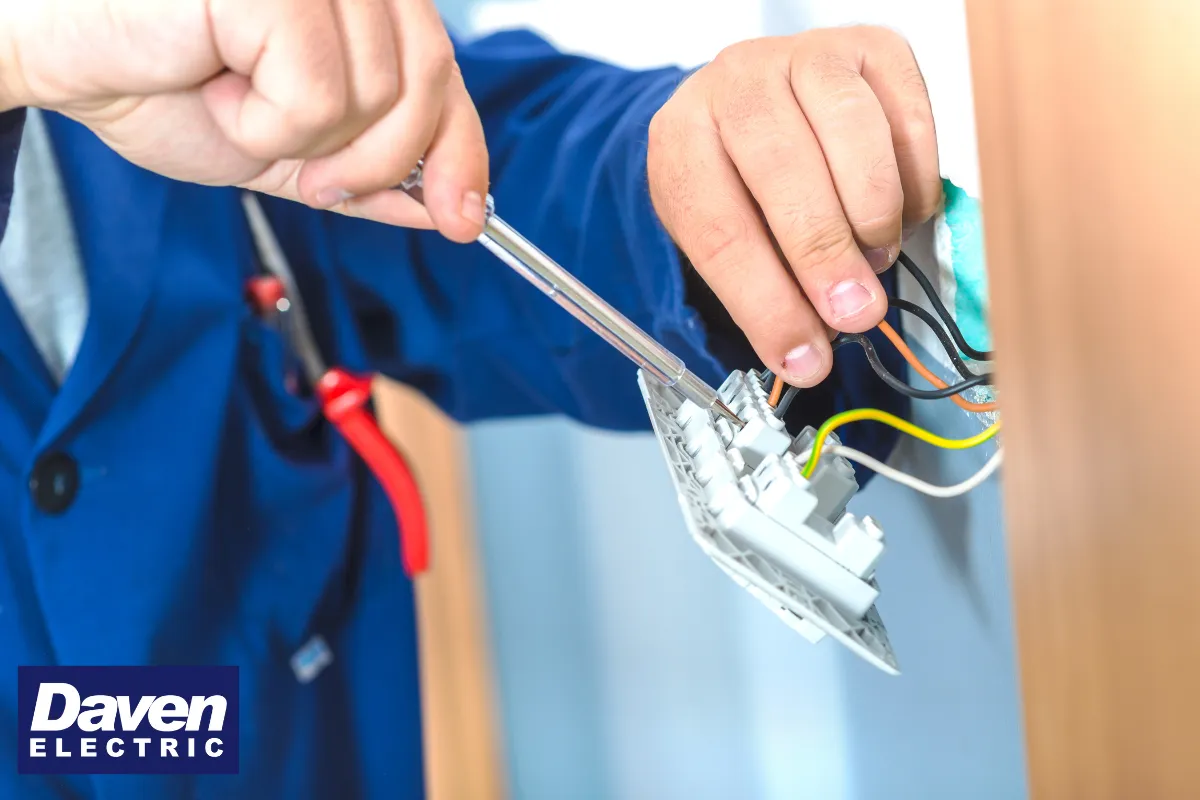
Navigating both the NEC and the New York City Electrical Code can be overwhelming. A certified commercial electrician in Manhattan plays a crucial role in interpreting and applying these codes correctly during installation, renovation, or inspection.
Professional electricians:
- Understand both national and local code requirements.
- Can identify areas where GFCI protection is required.
- Handle permits and city inspections.
- Provide documentation for compliance audits.
- Perform accurate installations using approved materials.
Hiring the right electrician helps businesses avoid costly mistakes and ensures long-term safety for both people and property.
Stay Compliant and Protect Your Business
Following the NEC standards for GFCI outlets isn’t just about meeting legal requirements—it’s about creating a safe and functional space where business operations can run smoothly. As technology advances and building systems become more complex, electrical safety must remain a top priority for all commercial property owners and managers in Manhattan.
Every year, updated codes reflect improved safety practices and accommodate new building technologies. Staying informed and proactive will save your business time, money, and avoidable risk.
Manhattan Commercial Electrician – Daven Electric Corp.
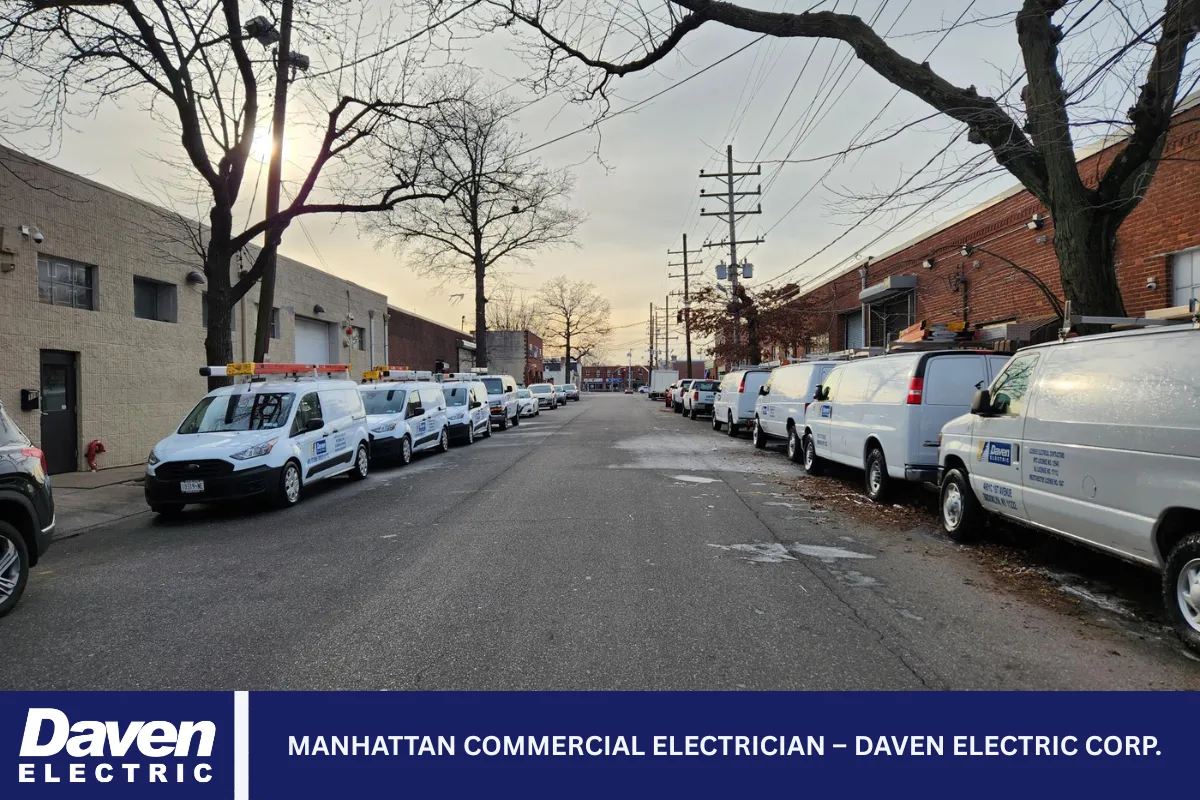
Looking for a reliable commercial electrician in Manhattan? Daven Electric Corp. provides licensed electrical services that meet NEC and New York City code requirements. Whether you need GFCI outlet installations, electrical repairs, or full system upgrades, our team delivers precise and dependable solutions to keep your business safe and compliant.
We work with business owners, general contractors, and property managers throughout New York City, Westchester, and Putnam counties. From office renovations to restaurant remodels and multi-unit buildings, we handle every project with a focus on safety, performance, and customer satisfaction. Call us today at (212) 390-1106 to schedule your service.
Frequently Asked Questions (GFCI Outlets & NEC Code Compliance in Manhattan)
What is the difference between GFCI outlets and circuit breakers, and do you need both?
GFCI outlets and circuit breakers serve different purposes, and in many commercial buildings, both are required for full protection. A GFCI outlet protects against shock hazards by monitoring the current between the hot and neutral wires. If an imbalance is detected, it cuts power instantly to prevent injury.
On the other hand, a circuit breaker protects the wiring system from overcurrent, arcing, and short circuits. It trips when there’s too much electrical load, preventing overheating and potential fires.
While GFCI devices protect people, circuit breakers protect the building’s 120V branch-circuit wiring. According to NEC protection requirements, both types of protection are often necessary in high-risk locations, such as bathrooms, kitchens, and accessory buildings.
Some commercial systems also use ground-fault protection breakers, which combine the features of GFCIs and standard breakers, providing enhanced safety at the panel level. Always ensure that installations comply with the NEC code and any applicable local amendments.
Where should GFCI outlets be installed according to the NEC in commercial buildings?
The NEC GFCI outlets code outlines several specific locations where these outlets must be installed to minimize electrical hazards. In commercial settings, the following dwelling unit locations and public areas require GFCI protection:
- Bathrooms – All receptacles.
- Kitchens – Outlets within 6 feet of a sink or water source.
- Rooftops – Service receptacles for HVAC or lighting systems.
- Accessory buildings – Any structure with electricity and exposure to moisture.
- Laundry and utility rooms – Especially if a disposal receptacle or sink is present.
- Outdoor areas – All exterior outlets must be GFCI protected.
Additionally, GFCIs must be installed in accessible locations, meaning they should not be hidden behind appliances or equipment. This is crucial for monthly testing and quick resetting.
The NEC protection for receptacles also extends to areas using extension wiring, which increases risk due to temporary or exposed setups. Manhattan’s local amendments closely follow these standards, often adding stricter inspection protocols.
How does GFCI protection work on the load-side terminals, and why is it important?
GFCI outlets protect both the outlet itself and any receptacles wired downstream from it via the load-side terminals. These terminals enable electricians to extend ground-fault protection to other outlets within the same circuit without requiring the installation of additional GFCIs.
When wired correctly, the GFCI monitors all downstream receptacles. If a fault occurs anywhere along that protected path, the device trips and shuts off power to everything downstream. This is cost-effective and code-compliant when installed properly.
However, miswiring the junction box or reversing the line and load terminals can result in non-functional protection, leaving the system vulnerable to shock hazards. This is why GFCI protection must be tested monthly, both after installation and periodically thereafter.
The NEC includes strict guidelines for protection requirements, especially in locations with water, heavy equipment, or temporary extension wiring. Proper wiring of load-side terminals ensures consistent and reliable protection across the entire branch of 120V branch-circuit wiring in commercial buildings.
What are the NEC rules for disposal receptacles in commercial kitchens or break rooms?
Under the NEC GFCI outlets code, any disposal receptacle in a commercial kitchen or break room must be protected by a GFCI outlet. These receptacles power garbage disposals, which are typically located beneath sinks—an area prone to moisture and splashing water. According to the NEC, any outlet within 6 feet of a sink, especially where food or beverages are prepared, must have ground-fault circuit interrupter (GFCI) protection.
Even though disposals are often hardwired, if they’re plugged into a standard outlet or powered through extension wiring, the outlet must offer GFCI protection. This applies to restaurants, cafeterias, office pantries, and even retail locations with small kitchenettes.
Installations must ensure that accessible locations are available for testing and resetting access. In some older buildings in Manhattan, the outlet may be hidden behind cabinetry. If so, it should be relocated, or a GFCI breaker must be installed at the panel to meet protection requirements and local inspection codes.
Can GFCI outlets be installed in junction boxes, and what are the safety concerns?
Yes, GFCI outlets can be installed in junction boxes, provided the boxes are properly rated and installed in an accessible location. The junction box must be large enough to house the GFCI device, accommodate all wiring, and meet clearance standards outlined in the NEC.
When improperly installed, junction boxes can lead to overheating, improper grounding, or arcing of wiring—all of which pose serious shock hazards or fire risks. The box must allow sufficient space for the GFCI’s depth, especially in commercial applications where more wires may be present.
NEC guidelines also state that any box used for GFCI protection must remain accessible for testing and maintenance. Installing a GFCI in a concealed or hard-to-reach box violates NEC protection requirements. It will not pass code inspections in Manhattan.
If space is limited, electricians may install a GFCI circuit breaker at the panel instead, which still protects receptacles downstream, ensuring compliance and safety.
Read more: Common Violations of GFCI Code in Manhattan Commercial Buildings

